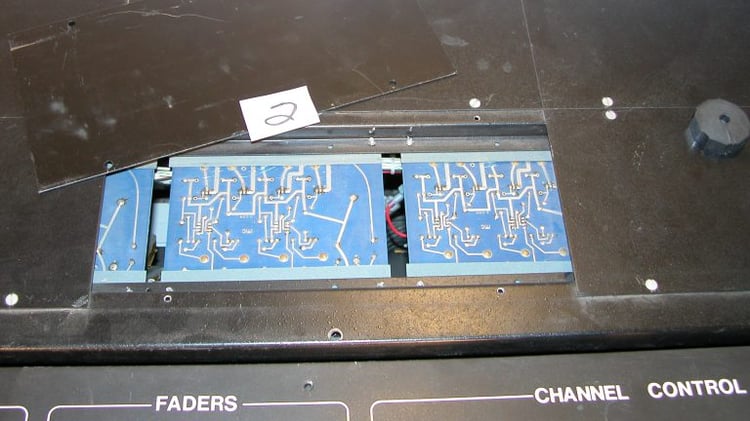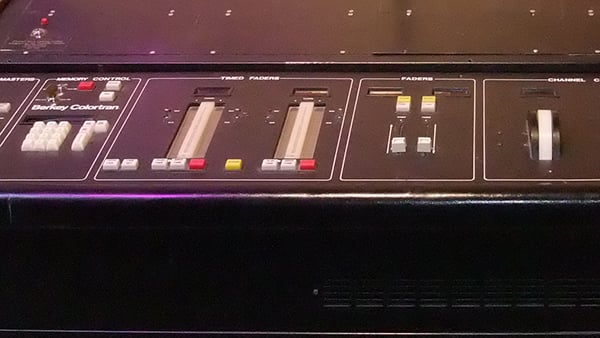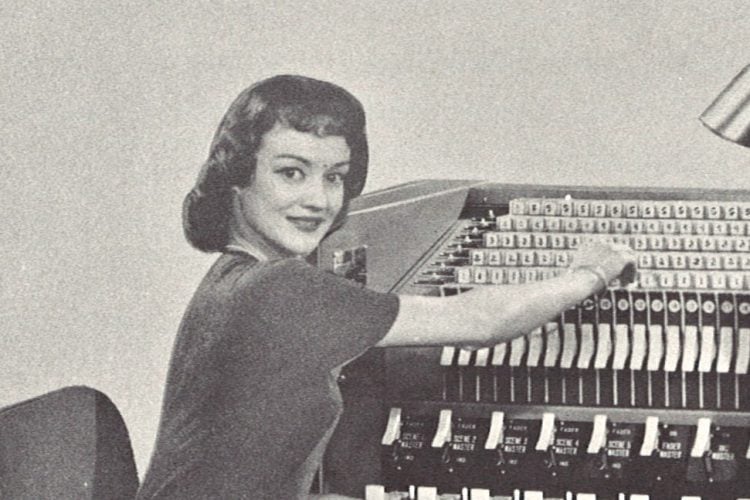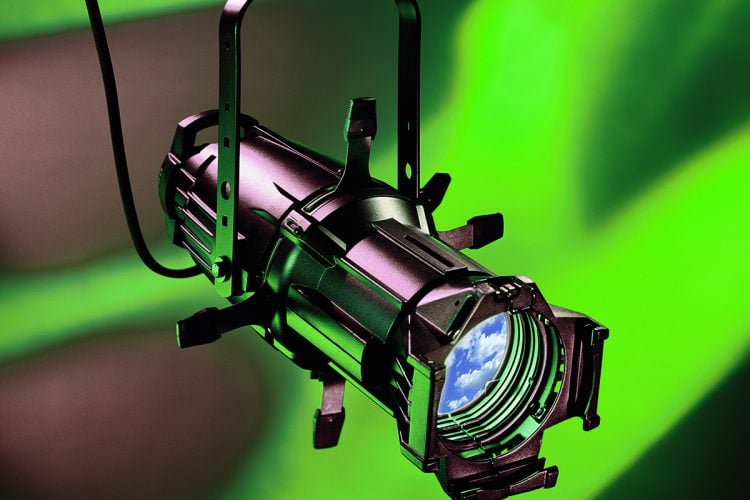Over the years, ETC has amassed a collection of relics from the lighting industry’s past. In this series of posts, we bring these artifacts back into the light and share them with you. This month’s featured item: a Berkey Colortran Channel Track 2 console from the MGM Grand showroom in Las Vegas.

The Channel Track consoles were Colortran products, but they were also an important part of early ETC history. The desks were direct descendants of ETC’s first console, the Mega Cue. Beginning in 1978, the two companies partnered to create the Channel Track system, and sold over 150 of the desks over the course of four years. ETC designed and manufactured the software, CPU board and faceplate and provided them to Colortran, who supplied the box and power supplies. The system introduced several novel technologies, including the ability to range-edit a single channel (Channel Track) and a serial digital communication system that anticipated DMX by more than eight years.
A glamorous history

The model exhibited here is a Channel Track 2 (serial number 14), which boasted 400 control channels and supported two monitors. It ran on a 2.5 Mhz Z-80A processor and used only 48K of DRAM. This unit was installed in the showroom at the MGM Grand in Las Vegas. It remained in use there for over a decade, even surviving a fire in 1980. Around 1992, the console was retired and sent back to ETC, where it has lived ever since. When the console arrived, it still had the disk from Liberace’s show in one of its two 8″ floppy drives.
Do you have more information about this item or another piece of industry history you’d like to see featured? Let us know at blog@etcconnect.com





